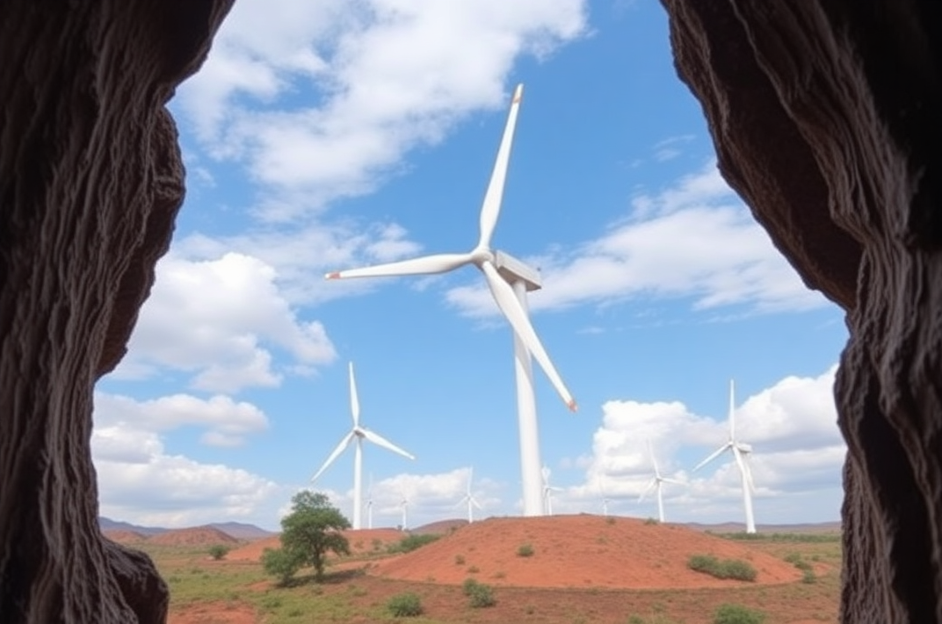
Kenya is facing new challenges as it pushes to achieve a 100% clean electricity grid by 2030. While the country has already made big progress, reaching 90% renewable electricity input, up from 50% in 2000, experts say the final stretch may be the most difficult.
According to a recent article published in Nature titled ‘Kenya’s Big Bet on Renewables’, the country needs greater grid flexibility and diversification of energy sources to meet its ambitious goal in the next five years.
One of the biggest obstacles is the unreliable national grid. While solar and wind energy are expanding, the electricity grid infrastructure has not been fully upgraded to handle the fluctuating input from these sources.
The article also highlights transmission losses, voltage instability, and insufficient energy storage as key issues that could weaken the overall efficiency of renewable power distribution.
Another major barrier is the high upfront cost of building renewable energy infrastructure. While geothermal and wind power plants are cheaper to run over time, the initial cost of drilling, installing batteries, and upgrading the grid is still too high for many investors.
The Nature article also cited a recent Climate Investment Fund (CIF) report, which found that geothermal energy provides the largest share of Kenya’s electricity, contributing about 45%. It is followed by hydropower at 19%, solar at 17%, and wind at only 3%.
One of the most important projects is the Lake Turkana Wind Power Project, a large wind farm that supplies about 15% of Kenya’s electricity and is funded by the African Development Bank (AfDB), the European Investment Bank (EIB), and Standard Bank.
By using wind energy, the project reduces the need for thermal (fossil fuel) power plants, helping to cut carbon emissions by around 700,000 tonnes each year.
Kenya ranks third in Africa on the World Economic Forum’s Energy Transition Index, just behind Morocco and Namibia.
The government has introduced several policies to attract private investment and align with global climate goals like the UN 2030 Agenda for Sustainable Development.
But experts say that without urgent steps to modernize the grid, lower infrastructure costs, and improve storage systems, Kenya might miss its 2030 clean energy target.
To further support clean energy, the Climate Investment Fund (CIF) last year approved a $70 million plan, starting with $46.39 million, to help Kenya integrate more renewable energy into its national grid.
The Renewable Energy Integration (REI) program, run by CIF, hopes to bring in an extra $243 million from public and private partners, including AfDB and the World Bank. The goal is to expand wind and solar energy use from the current 19% to 30% by 2030.
“Kenya’s national ambition proved to be a great match for our pioneering REI programme – REI was created to get clean energy to consumers where and when they need it, addressing the issues linked to the deployment of renewable intermittent power sources in developing economies,” Daniel Morris, Clean Energy Lead at CIF was quoted in the article.
ACCESS TO CLEAN COOKING
According to the International Energy Agency’s (IEA) new Energy Policy Review of Kenya, the country has made strong progress in expanding access to clean cooking over the past ten years. Access to clean cooking rose from just 10% in 2013 to over 30% in 2023.
However, millions of Kenyan households, especially in rural areas, still depend on harmful fuels like firewood, charcoal, and kerosene for cooking.
To tackle this, the country has launched the Kenya National Cooking Transition Strategy (KNCTS), which provides a clear plan to achieve universal access to clean cooking by 2028.
The IEA report stresses that clean cooking must be part of Kenya’s broader energy planning. It also calls for stronger supply chains for clean fuels and technologies to overcome key challenges such as unstable fuel prices and the high cost of improved cookstoves, which remain unaffordable for many households.
The report also highlights Kenya’s ongoing efforts to upgrade and expand its electricity grid. New regulations introduced in 2024 now allow private investment in the country’s transmission and distribution networks expected to boost competition, lower costs, and improve efficiency.
In 2023, the country recorded power losses of around 23%, mostly due to technical faults, electricity theft, and billing issues. The report says smart grid technologies and improved management systems are being considered.
The IEA also says Kenya has strong energy policies, a skilled workforce, and great renewable energy potential, all of which can help it build a more inclusive, sustainable, and reliable energy future.
DISCLAIMER: The Views, Comments, Opinions, Contributions and Statements made by Readers and Contributors on this platform do not necessarily represent the views or policy of Multimedia Group Limited.
DISCLAIMER: The Views, Comments, Opinions, Contributions and Statements made by Readers and Contributors on this platform do not necessarily represent the views or policy of Multimedia Group Limited.
- President Commissions 36.5 Million Dollars Hospital In The Tain District
- You Will Not Go Free For Killing An Hard Working MP – Akufo-Addo To MP’s Killer
- I Will Lead You To Victory – Ato Forson Assures NDC Supporters
Visit Our Social Media for More




